What are Greases?
Greases are semisolid lubricants composed of a thickening agent dispersed in a liquid lubricant. They are used to reduce friction and wear between moving parts, as well as to provide a barrier against moisture and debris in various mechanical systems.
Composition of Greases
The basic components of greases include:
- Thickener: Usually a metal soap or a non-soap thickener, which gives the grease its semi-solid consistency.
- Lubricating Fluid: Typically mineral oil or synthetic oil, which provides the lubricating properties.
- Additives: These can include antioxidants, corrosion inhibitors, and other performance-enhancing chemicals.
Properties of Greases
Greases possess several important properties, including:
- Viscosity: The thickness or flow resistance of the grease.
- Dropping Point: The temperature at which the grease changes from a solid to a liquid state.
- Water Resistance: The ability of the grease to repel water and maintain its lubricating properties in wet conditions.
- Load-Carrying Capacity: The ability of the grease to withstand pressure and support heavy loads without breaking down.
Applications of Greases
Greases are used in a wide range of applications, including:
- Automotive and industrial machinery
- Agricultural equipment
- Marine and off-road vehicles
- Construction machinery
Study Guide
When studying greases, it's important to focus on the following key areas:
- Understanding the composition of greases, including the role of thickeners, lubricating fluids, and additives.
- Exploring the properties of greases, such as viscosity, dropping point, water resistance, and load-carrying capacity.
- Identifying the various applications of greases in different industries and machinery.
- Learning about the importance of proper grease selection and application techniques for optimal equipment performance.
◂Science Worksheets and Study Guides Sixth Grade. Birds and Mammals
Study Guide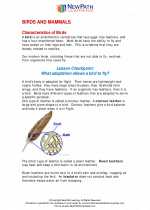 Birds and Mammals
Birds and Mammals  Activity Lesson
Activity Lesson Birds & Mammals
Birds & Mammals  Worksheet/Answer key
Worksheet/Answer key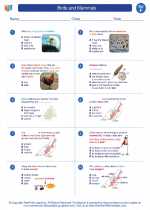 Birds and Mammals
Birds and Mammals  Worksheet/Answer key
Worksheet/Answer key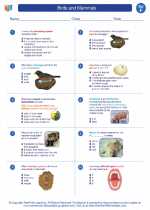 Birds and Mammals
Birds and Mammals  Worksheet/Answer key
Worksheet/Answer key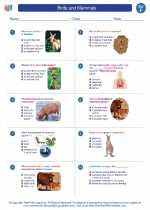 Birds and Mammals
Birds and Mammals  Worksheet/Answer key
Worksheet/Answer key Birds and Mammals
Birds and Mammals  Vocabulary/Answer key
Vocabulary/Answer key Birds and Mammals
Birds and Mammals  Vocabulary/Answer key
Vocabulary/Answer key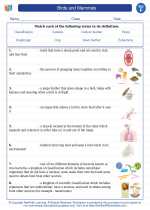 Birds and Mammals
Birds and Mammals  Vocabulary/Answer key
Vocabulary/Answer key Birds and Mammals
Birds and Mammals  Vocabulary/Answer key
Vocabulary/Answer key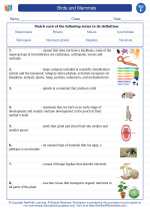 Birds and Mammals
Birds and Mammals  Vocabulary/Answer key
Vocabulary/Answer key Birds and Mammals
Birds and Mammals 

 Activity Lesson
Activity Lesson
 Worksheet/Answer key
Worksheet/Answer key
 Worksheet/Answer key
Worksheet/Answer key
 Worksheet/Answer key
Worksheet/Answer key
 Worksheet/Answer key
Worksheet/Answer key
 Vocabulary/Answer key
Vocabulary/Answer key
 Vocabulary/Answer key
Vocabulary/Answer key
 Vocabulary/Answer key
Vocabulary/Answer key
 Vocabulary/Answer key
Vocabulary/Answer key
 Vocabulary/Answer key
Vocabulary/Answer key

The resources above cover the following skills:
LIFE SCIENCE
From Molecules to Organisms: Structures and Processes